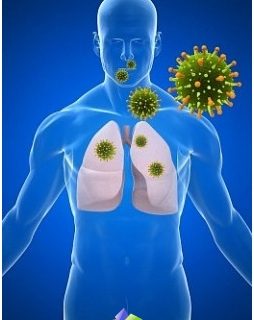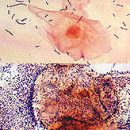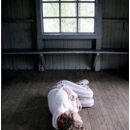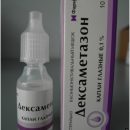Types of brain stroke

Stroke, or acute insufficiency of blood supply to any of the brain sections, develops very quickly: oxygen fasting occurs within a few minutes, in some cases the process takes several hours. This means that brain nerve cells begin to die almost instantly.
The cause of the stroke determines the type of disease:
- Ischemic stroke. In medical practice, this kind is found most often (about 80% of all cases). It occurs when the brain vessels clogs or squeezes the thrombus formed as a result of diseases of the heart, vessels or blood.
- Hemorrhagic stroke (20-25%). At the same time, the type of disease of the blood of a burst vessel falls under the shell or in the brain ventricles.
- Subarachnoid stroke (about 7%). The disease of this nature is most rare, as it has a traumatic origin. Brain lesion can cause an anti-brain injury or a gap of arterial aneurysm. Blood in this case fills the space between the sputum and soft shells of the brain.
The following factors may add to the risk zone:
- age after 50 years (in the absence of the correct routine of the day);
- belonging to the male floor;
- chronic elevated blood pressure;
- Chronic diseases of the cardiovascular system;
- nervous work with frequent stresses;
- Harmful habits (smoking, alcohol abuse);
- Systemic diseases: obesity, diabetes;
- asymptomatic stenosis of the sleepy arteries;
- Reception of oral contraceptives containing a large number of estrogen;
- Cases of stroke near relatives.
Causes of brain stroke

If a certain way to test the person who has become bad, you can still before arrival Ambulance refute or confirm the diagnosis «stroke».
Offer the victim to perform a few simple actions:
- Need to close your eyes and pull out your hands with palms up. On the lesion of the brain will indicate the hand, involuntarily «Output» Block and down.
- Ask the patient to launch the tongue. If it is unnaturally bent or rejected to the side, a person with a large probability of a stroke.
- Talk to the victim. Almost always man, «broken» stroke, rearranges syllables in words, says bitching and fuzzy.
- Let the patient try to smile: when stroke a typical picture when the corners stretched in the lips smile are directed in different directions.
If a terrible guess is confirmed, «ambulance» need to call without delay! In the conditions of the patient's hospital, a number of studies are waiting, which will approve the final diagnosis. Conclusions Experts are based on MRI testimony, transcranous doppler, MP spectroscopy and some other techniques.
How can you help the patient waiting for an ambulance brigade? From who are in these minutes next to the victims, you will need several simple actions:
- Raise the head of the person over the body by 30 degrees;
- Please note whether there is a clothes that shine the body on the sore: all belts, collars and buttons must be unbuttoned;
- Early patient arterial pressure. Increased pressure is normalized by drugs that the victim used earlier;
- If the victim cannot report, what medications it usually takes with hypertension, for a while you can lower his legs in a pelvis with warm water;
- If a person is unconsciously condition, it should be turned over to the right side. Under the lower jaw of the victim, there is a small flat container so that the accumulated saliva flows out and did not obstruct normal breathing.
Treatment of brain stroke
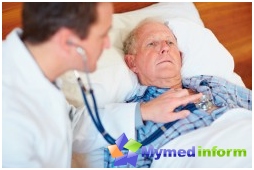
The disease is amenable to treatment only in hospital. The first few days the patient, as a rule, is carried out in resuscitation - in case of degradation of well-being.
The first hours after a stroke are the most important. At this time, the following activities are carried out:
- Through a computer tomogram, doctors determine the affected section of the brain. If the conditions of the clinic allow, with the help of special medication tools, the procedure for resorption of thrombus - thrombolysis. This method is relevant only in the first six hours after the attack.
- Using large doses Aspirin, Reopoliglucina, pentoxify, doctors reduce the increased viscosity of the patient's blood.
- To protect the damaged section of the brain and stimulation of reducing processes in affected cells, drugs from a group of nootrops, Cortexin and Cerebrolysin are connected.
After operational measures, further treatment is based on the use of drugs that reduce the risk of repetition of stroke and prevent complications after illness. In addition, doctors always keep the patient's blood pressure under control.
Restoration after illness

Stroke - one of those diseases that require indispensable rehabilitation. In order for the treatment of a brain stroke with success, the patient's relatives must organize a systematic visit to the patients of the following specialists:
- Consultant for LFK. Meet him need for the second day after the attack.
- Speech therapist. Specialist will help the patient to restore speech skills.
- Neuropsychologist. It will appreciate the state of memory and the intelligence of a person after the treatment.
- Physiotherapist that will help the patient as soon as possible to restore the nervous system.
- Psychotherapist. The doctor will teach the patient to cope with the feeling of breakdown and unnecessaryness.
Brain stroke prevention
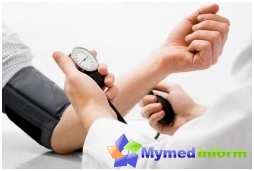
More than 75% of people who have undergone a stroke can no longer lead the former lifestyle - they become disabled. These growing data emphasize the great importance of the prevention of the disease, both for healthy people, and for those who have already encountered a stroke. The disease, by the way, pursues not only old people, on the contrary, in the last decade cases of disease among working people who have not achieved and 40 years.
Our site offers your simple, but effective way to protect the brain from stroke: Re-read the list of factors that provoke a disease, and think about which one you personally can eliminate from your life. For example, quit smoking, get rid of a dozen of extra kilograms or constantly control the fact «piercing» pressure. The main thing is to remember: everything you do to preserve your health today will definitely provide you with a calm, measured and, most importantly, painless life in the future.



